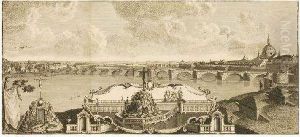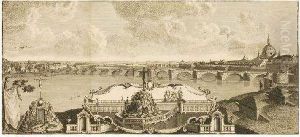Christian Friedrich Boetius Paintings
Christian Friedrich Boetius was a German portrait painter and lithographer, whose career spanned much of the 19th century, a period marked by significant transformations in the arts across Europe. Born on March 15, 1813, in Königsberg (now Kaliningrad, Russia), Boetius emerged from a context rich with the German Romantic tradition, yet his work also engaged with the evolving styles and techniques of his time, particularly the burgeoning field of lithography, which allowed for wider dissemination of artworks than ever before.
Boetius initially trained in his hometown, where he was exposed to the works of earlier masters and the academic principles that dominated art education. However, his artistic journey led him to further his studies and professional development in major art centers, including Berlin and Munich, cities that were at the forefront of artistic innovation in Germany. Throughout his career, Boetius specialized in portraits, capturing the likeness and personalities of his subjects with a keen eye for detail and a sensitive handling of light and shadow, a testament to his skills and understanding of human physiognomy.
His adoption and mastery of lithography marked Boetius as a forward-thinking artist who embraced new technologies. This medium not only broadened his artistic repertoire but also made his work more accessible to the public, contributing to the popularization of portrait art among a wider audience. Boetius's lithographs are characterized by their clarity, precision, and the ability to convey the texture and depth of his subjects' expressions and attire.
Christian Friedrich Boetius's contributions to art were not limited to his own creations. Through his engagement with the art community and his participation in exhibitions, he played a part in the broader dialogues and developments within the German art world of his time. Despite the lack of extensive documentation of his life and the overshadowing presence of more prominent contemporaries, Boetius's work remains a valuable insight into the portrait art and lithographic practices of the 19th century.
Boetius passed away on October 10, 1890, in Berlin, leaving behind a body of work that, while perhaps not as widely recognized today, offers a unique window into the evolving landscape of 19th-century European art. His portraits and lithographs continue to be appreciated for their technical skill, historical value, and their portrayal of the people and fashions of his era.

